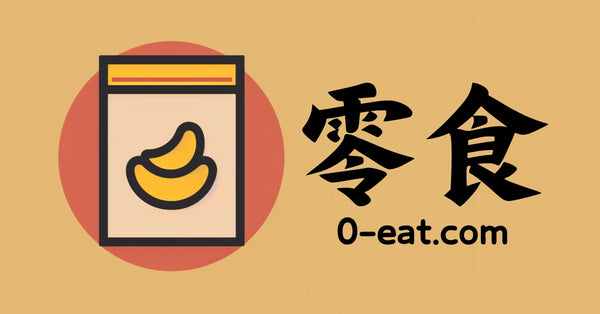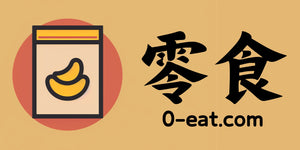How to choose snacks for your baby? Understand the ingredient list, avoid the blacklist, identify the GB standard, and be safe and healthy!
Choosing snacks for babies is a topic that many parents both look forward to and worry about. There are a wide variety of baby snacks on the market, claiming to be nutritious and delicious, but do parents really know how to choose? In fact, it is not difficult to choose snacks for your baby. By mastering a few key principles, you can easily avoid minefields and choose healthy and safe snacks!
Key 1: Understand the ingredient list, the simpler the better!
"Simple ingredients" is the first principle when choosing snacks for your baby. The ingredient list is like a product's "identity card", clearly listing all the ingredients. Smart parents need to learn to understand the ingredient list in order to ensure their baby’s health.

-
The secret of sorting the ingredient list: According to national standards, the ingredients on the ingredient list are sorted from high to low according to their content . The closer the ingredient is to the front, the higher the content. Therefore, we must first pay attention to the first few ingredients in the ingredient list.
-
The shorter the ingredient list, the better: For products of the same type, the shorter the ingredient list, the fewer additional ingredients are added , and it is relatively more natural and healthier. An overly long ingredient list often means that the product contains a large number of food additives, so parents should pay special attention.

-
Pay attention to the "hidden minefields" in the ingredient list: some ingredients may seem harmless, but may pose a burden to your baby's health. The following ingredients require special attention:
- Trans fatty acids: non-dairy creamer, hydrogenated vegetable oil, margarine, shortening, butter, refined vegetable oil, etc. are all trans fatty acids. Excessive intake of trans fatty acids can easily increase the risk of cardiovascular disease and induce diabetes . Parents should try to avoid choosing snacks containing these ingredients.

-
-
Added sugar: White sugar, brown sugar, fructose, glucose, maltodextrin, corn syrup, etc. are all added sugars. Excessive intake of added sugar can easily cause obesity, tooth decay, and even affect the endocrine system . The "Dietary Guidelines for Chinese Residents" recommends that daily added sugar intake should be controlled below 25g and no more than 50g .

-
Food additives: flavor enhancers, preservatives, sweeteners, flavor enhancers, antioxidants, thickeners, colorants, emulsifiers, etc. are all food additives. Although some additives are legal, some may cause burden or even harm to the baby's body . Parents should try to choose snacks with fewer or even no additives.

-
Added sugar: White sugar, brown sugar, fructose, glucose, maltodextrin, corn syrup, etc. are all added sugars. Excessive intake of added sugar can easily cause obesity, tooth decay, and even affect the endocrine system . The "Dietary Guidelines for Chinese Residents" recommends that daily added sugar intake should be controlled below 25g and no more than 50g .
Key 2: Avoid the baby snack blacklist and be careful with these ingredients!
In order to have a clearer understanding of which ingredients should be avoided as much as possible, we have compiled a "baby snack blacklist". Parents must keep their eyes open when purchasing:

-
Trans fatty acids (avoid):
- Hydrogenated fats
- Alanine (should be palmitic acid, possibly a typo)
- Shortening
- Glycine (should be hydrogenated vegetable oil, possibly a typo)
- Hydrogenated Oil
- Refined vegetable oil
- Vegetable cream
- Margarine
- Edible hydrogenated oil
- Hydrogenated vegetable oil
- Anhydrous Ghee
- Refined Coconut Oil
- Cocoa Butter Substitute
- Refined palm oil
-
Preservatives (avoid as much as possible, pay special attention to the following high-risk types):
- Sodium nitrite (a carcinogen!) - commonly found in pickled vegetables and canned meat
- Sodium bisulfite - commonly found in candied fruit, rock candy, and dried fruits
- Sodium dehydroacetate - commonly found in biscuits, bread, pickles, beverages
- Sodium nitrate - commonly found in cured meats, sausages, ham
- Sodium benzoate - commonly found in cakes, ice cream, and biscuits
- Methylparaben - commonly found in soy sauce, vinegar, beverages
- Potassium sorbate - commonly found in beverages, candies, and cakes
-
Colorants (try to avoid artificial colors):
- Lemon Yellow
- Sunset Yellow
- Titanium Dioxide
- Amaranth (carcinogen!)
- Carmine (carcinogen!)
- Brilliant Blue (carcinogen!)
- Beet red
- turmeric
- Cochineal
- New Red
- Erythrosin (should be Erythrosin)
- These artificial colors are mostly used in fruit juice drinks, etc. and should be avoided as much as possible.

-
Thickener (some types require attention, just the right amount):
- Gum Arabic
- Carrageenan
- Pectin
- Agar
- Alginic acid
- Chitosan
- Guar Gum
- Xanthan gum
- gelatin
- Casein
- Citric Acid
- Frozen Sodium Cellulose
- These thickeners are commonly found in viscous foods such as yogurt. They should be consumed in moderation, but too much may affect digestion.

-
Leavening agent (optional, avoid as much as possible):
- Sodium bicarbonate
- Ammonium bicarbonate
- Potassium Aluminum Sulfate
- These leavening agents are mainly used in the production of biscuits and pastries. They are non-essential ingredients and should be avoided as much as possible.

-
Flavor enhancers (optional, avoid as much as possible):
- Disodium succinate
- Alanine
- Glycine
- These flavor enhancers are not necessary ingredients, so try to choose snacks with natural flavors.

Key three: Identify GB implementation standards for greater safety!
When choosing snacks for your baby, safety always comes first. China has established strict standards for infant food. Parents must pay attention to the implementation standard number on the product packaging when purchasing. Look for the following GB standards to provide an extra layer of protection for your baby’s health:

-
GB10769-2010: Cereal-based complementary foods for infants and young children
- Suitable for cereal snacks such as rice cereal, noodle biscuits, etc. for babies over 6 months old.

-
GB10770-2010: Canned complementary foods for infants and young children
- Suitable for canned foods such as fruit puree, vegetable puree, meat puree, etc. for babies over 6 months old.

-
GB 22570-2014: Food supplements
- Suitable for nutrient supplement foods for babies aged 6-36 months, such as calcium, iron and zinc supplements.

Intimate reminder for choosing snacks for your baby:
- It is not recommended to add additional sugar to babies under 1 year old , and sugar intake should also be controlled for babies over 1 year old. Try to avoid choosing snacks whose top three added sugars are white sugar, sucrose, and high fructose corn syrup.
- Try to choose original, additive-free snacks to let your baby taste the natural flavor of the food.
- Pay attention to the portion size of snacks ; snacks are only supplements and cannot replace regular meals.
- Read the instructions on the product packaging carefully to understand the product's applicable age, ingredients, how to consume, etc.
Summarize
Choosing snacks for your baby may seem complicated, but as long as you master the three principles of "understanding the ingredient list, avoiding the blacklist, and identifying the GB standard", you can easily choose healthy, safe and delicious snacks for your baby. I hope this article can help parents and ensure the healthy growth of their babies!



